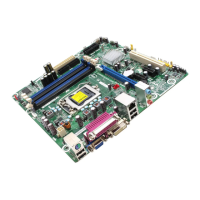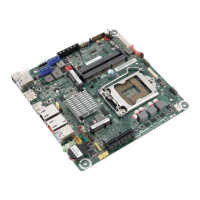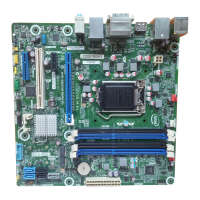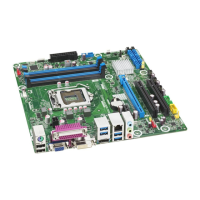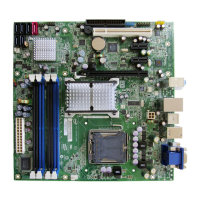65
3 Overview of BIOS Features
3.1 Introduction
The board uses an Intel BIOS that is stored in a 64 Mbit (8,192 KB) Serial Peripheral
Interface Flash Memory (SPI Flash) device which can be updated using a set of
utilities. The SPI Flash contains the BIOS Setup program, POST, LAN EEPROM
information, Plug and Play support, and other firmware.
The BIOS displays a message during POST identifying the type of BIOS and a revision
code. The initial production BIOSs are identified as SWQ6710H.86A.
The BIOS Setup program can be used to view and change the BIOS settings for the
computer. The BIOS Setup program is accessed by pressing the <F2> key after the
Power-On Self-Test (POST) memory test begins and before the operating system boot
begins. The menu bar is shown below.
Maintenance Main Configuration Performance Security Power Boot Intel ME Exit
NOTE
The maintenance menu is displayed only when the board is in configure mode.
Section 2.3 on page 56 shows how to put the board in configure mode.
CAUTION
Resetting the BIOS to defaults may result in the system becoming unbootable or
corrupting the HDD if RAID is used. This is due to the fact that Chipset-SATA Mode
now defaults to AHCI.

